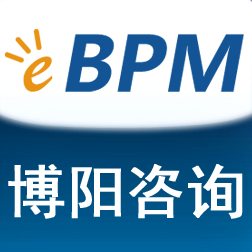【摘要】:在2013年和2014年,Forrester公司看到了越来越多的BPM团队采用客户体验的做法,如客户的旅程映射和生态系统的映射。在2013第三季度Forrester公司/ IQPC调查,BPM超过30%的专业人士表示他们使用客户的旅程映射作为一个关键过程变化的技术。
2015 BPM Predictions: Clay Richardson, Forrester Analyst
Published: November 20, 2014
Written by Clay Richardson
In 2014, the top priorities for business process management (BPM) initiatives focused on extending mission critical business processes to support the mobile workforce and redesigning business processes to deliver exceptional customer experiences. During 2014, Forrester also noticed a growing appetite to move business critical processes into the cloud using BPM platform-as-a-service solutions. And, although customer sentiment for BPM was mixed to negative in 2014, software vendors reported respectable double-digit revenue growth for BPM solutions. Sounds like it’s time to pop the bubbly and celebrate, right?
Not quite yet. In 2015, BPM will fight to expand its relevance in the front office and will need to shed serious weight to better align with age of the customer imperatives that prioritize speed-to-market over analysis and complexity – traditional hallmarks of the BPM discipline and software solutions. Together, with my colleague Craig Le Clair, we expect 2015 to be a tipping point for the BPM market. In 2015, customer-obsession – the relentless focus on winning, retaining, and serving customers – will disrupt and reshape the entire ecosystem for BPM:
All major BPM software vendors will shift to focus on process apps. Heightened customer and employee expectations for rapid process change will shine a bright light on the need to reduce lengthy analysis and design times typically associated with BPM. At their core BPM software and techniques provide low-code approaches to quickly build and deploy process apps that directly engage customers and better guide employees to deliver exceptional customer experiences. In 2015, Forrester predicts that all major BPM software vendors will streamline their products to focus on “app-centric” approaches to BPM that put external customers at the center of design and development. The traditional “operations-centric” approach will remain relevant, but will take a backseat in 2015. App-centric approaches will also feed the need for rapid process change through smart process apps – configurable vertical and horizontal apps built on BPM platforms – in the cloud.
An increasing number of BPM projects will be run by customer experience teams. Over 2013 and 2014, Forrester saw an increasing number of BPM teams adopt customer experience practices, such as customer journey mapping and ecosystem mapping. In a Q3 2013 Forrester/IQPC survey, over 30% of BPM professionals indicated they used customer journey mapping as a key process change technique. However, a separate trend that is not getting as much visibility is around customer experience teams adopting BPM techniques, such as Lean and Six Sigma. In 2015, Forrester predicts that customer experience teams will either subsume process change teams or hire an increasing number of process experts that can help them implement critical business process changes connected to customer experience. Parallel to this prediction, Forrester expects an increasing number of companies to co-locate customer experience and process change initiatives under the same umbrella. To succeed, these teams will need to build a set of shared capabilities that connect customer experience, process architecture, and rapid execution.
No doubt, 2015 will be a bumpy year for BPM professionals. However, every major disruption presents rich opportunities for reinvention – on both personal and professional levels. If you want to know more about these trends and what they will mean for your initiative, you can download and read the full report or contact us. You can also browse the full list of Forrester’s 2015 Predictions reports.
Clay Richardson
PRINCIPAL ANALYST SERVING ENTERPRISE ARCHITECTURE PROFESSIONALS
Clay serves Enterprise Architecture Professionals and is a leading expert on business process management (BPM) software, services, and methodologies. Clay delivers strategic guidance to professionals seeking to improve collaborative and operational business processes.
specifically helps enterprises establish BPM strategies, governance standards, and BPM centers of excellence; identify Agile and Lean methodologies best suited for BPM projects; and establish vendors and technologies that help automate and optimize mission-critical business processes.
Previous Work Experience
Clay comes to Forrester with many years of experience in business process improvement projects, BPM platforms and solutions selection, systems analysis and design, and project management for enterprise software implementations. Clay has led projects to successfully deploy BPM solutions for government and commercial organizations around the world and has specialized in helping create BPM centers of excellence.
Most recently, Clay served as BPM practice leader at Project Performance Corporation, a system integrator based in Washington, D.C., where he launched and managed the company's BPM practice. Prior to that, Clay directed a team of 30 consultants, trainers, and support engineers in delivery and support of BPM solutions, as the director of professional services at HandySoft Global Corporation, a pure-play BPM vendor.
Clay is active with several BPM industry associations, including the Workflow Management Coalition, where he served as founder and co-chair of the organization's public sector chapter.
Education
Clay earned a B.S. in computer science from the University of South Carolina and a BPM professional certificate from Boston University.




 原 文
原 文 